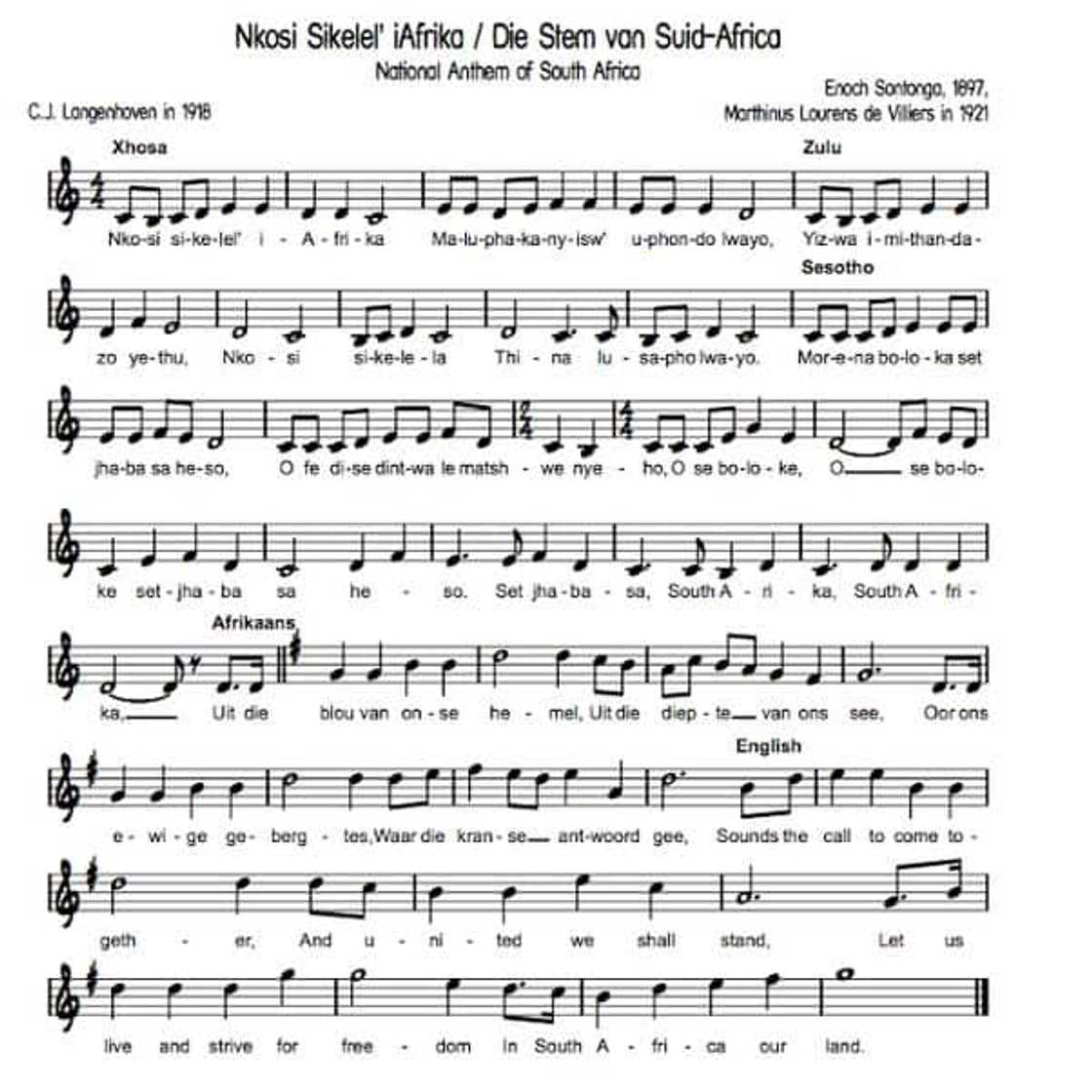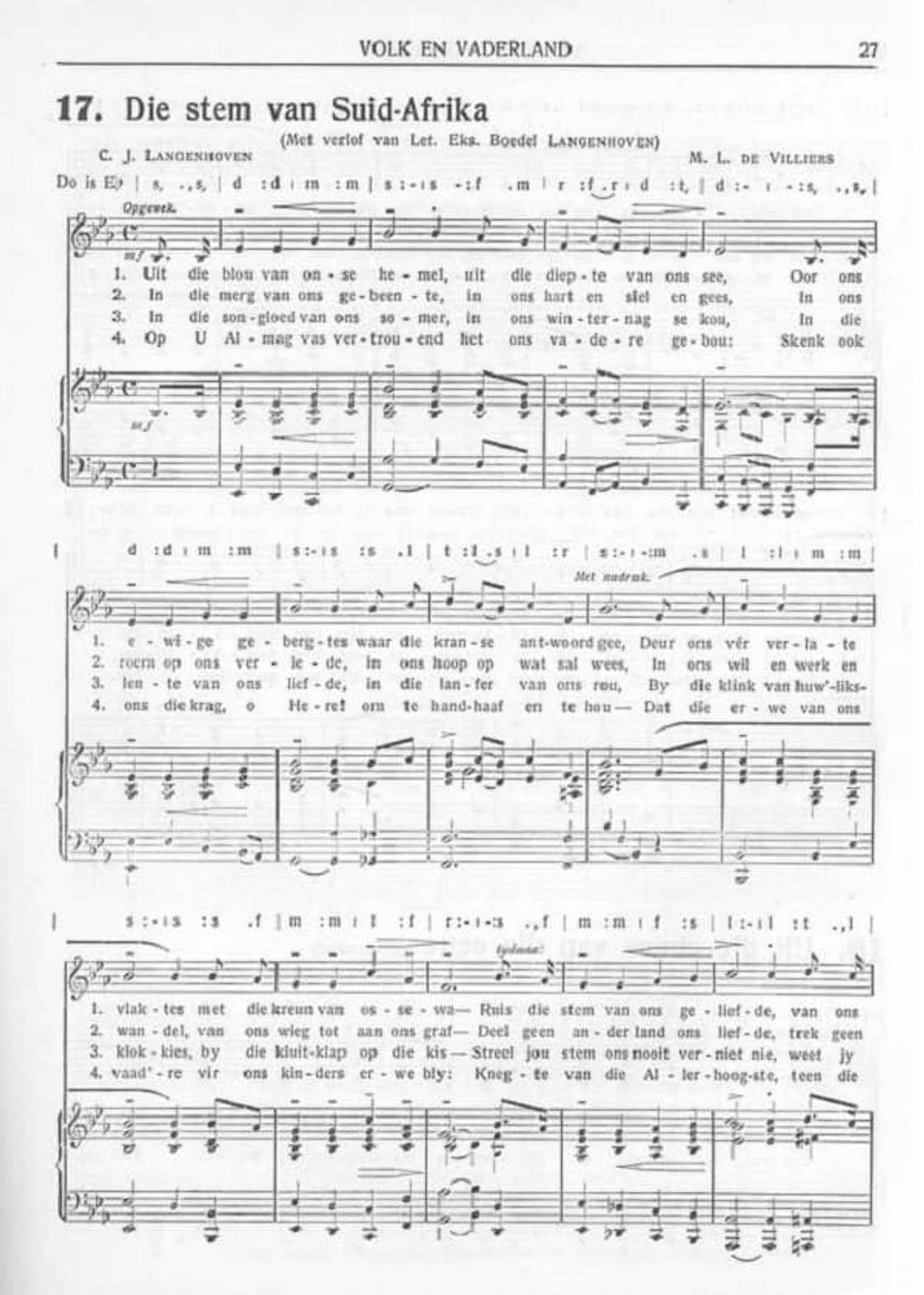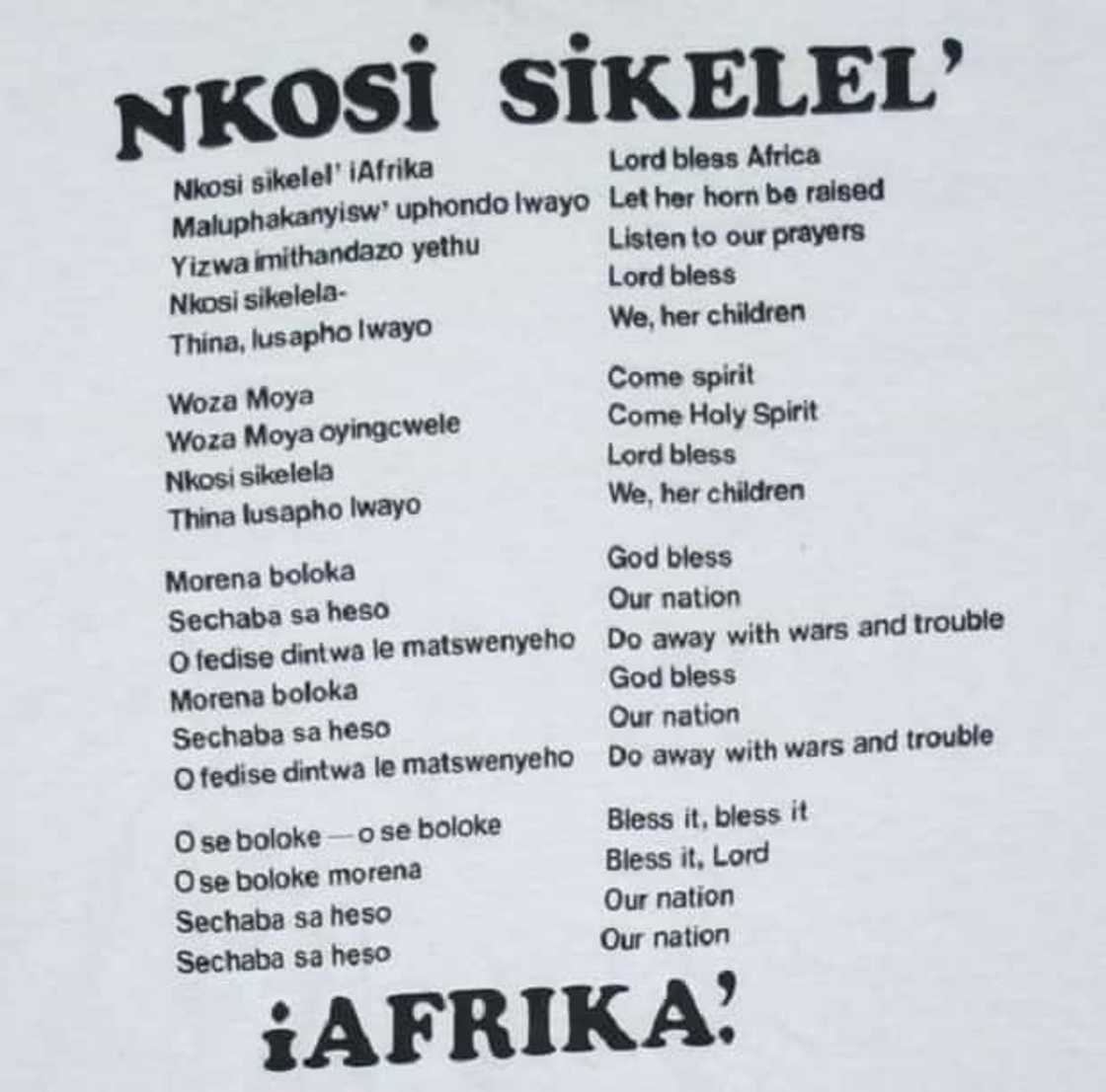The national anthem has been in existence for years and has gone through transformations.
It originates from Nkosi Sikelel iAfrika, a song that was once a poem.
It is therefore necessary to be knowledgeable on what the national anthem stands for and Nkosi meaning.

Image: pinterest.com, @flickr.comSource: UGC
Die “Stem van Suid-Afrika” was the first song that was used as the national anthem.
The intended message in the song is calling for the blessings of God upon the country.
The claims further state that the consequences of the idol worship were Shaka Zulu butchering six thousand pregnant women.

Read also
Ek het nooit geweet die NKOSI is n ander god waarvan gepraat word nie.
HOE HET GOD opgetree teen Israel as hulle begin ander gode aanbid het?
Ons is besig met afgodery en ons besef dit nie eers nie.

Image: pinterest.com, @bestmusicnotes.blogpost.comSource: UGC
Ons is in die moeilikheid by God.
Nkosi is die eerste voorvadergees.
In Levitikus 20 se Hy uitdruklik: Dit is n gruwel voor die Here om dooies te raadpleeg.

Read also
Jy mag nie die geeste van gestorwe voorvaders aanroep nie!
Ons stel ons God gelyk aan Nkosi die groot voorvadergees.Wat leer die godsdiens van Nkosi?
Ek is mens deur ander mense.

Read also
As dit met my sleg gaan is dit ander mense se skuld.
En hulle verklaar dat Nkosi die koning hartseer maak deur die swangerskap van vroue.
Dit leer Nkosi hom.

Read also
Slag die swanger vroue, want hulle maak my hartseer, se die koning.
Vermoor die boere, want hulle laat my dink aan swaarkry dis wat gesing word omdat dit geglo word.
Nkosi se: Sonde is buite die mens.

Image: pinterest.com, @quazoo.comSource: UGC
Maak die ander dood, want hy is die oorsaak van jou sonde.
Die sonde kom van buite!
Kan u vir u voorstel dat die ware God my sal straf vir n ander se sonde?

Read also
Nie my God nie!
Ons aanbid n afgod en ons weet dit nie !"
Its musical version was, later on, composed by Reverend ML de Villiers in 1921.

Image: pinterest.com, @kora.matrix.msu.eduSource: UGC
Later that year, the government went through the legal procedures of acquiring copyright for the song.
It was translated to English and allowed for use as the national anthem of South Africa.
The lyrics of the first stanza of the song were in Xhosa, and they came as a hymn.

Read also
The song went from being sang in the church to being sang in political rallies.
It was used for defiance, especially when there was apartheid.
Seven more verses were added to the song, and later on, it was translated to Sesotho.

Read also
The final lyrics of the song are a combination of Zulu, Xhosa, and Sesotho.
(Let it be so)
Ma kube njalo!
Kude kube ngunaphakade, (Forever and ever)
Kude kube ngunaphakade!
However, the ideology of Nkosi being a god might be reason enough to cause division in the country.
She has a Bachelor of Commerce & IT from the University of Nairobi and joined Briefly.co.za in November 2019.
The writer completed a Google News Initiate Course.
you’re free to email her at perisrodah254@gmail.com.